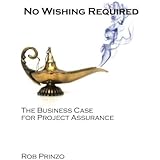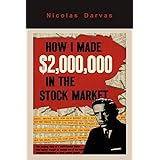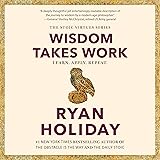Many individuals today are keenly searching for effective ways to build and secure their wealth through tangible assets. It’s a fundamental question for countless prospective investors: how does one identify valuable assets, and what is the most practical approach to acquiring them? As the video above thoughtfully suggests, precious metals like silver can represent a compelling option for those looking to diversify their investment portfolio.
The speaker introduces a fascinating and practical trick for securing assets, specifically highlighting a 100-gram silver bar from Valcambi, a reputable metal refiner. This particular bar stands out because it can be conveniently divided into 100 individual pieces, offering both flexibility and a unique appeal to collectors and investors alike. Understanding the nuances of buying such physical assets, however, requires a deeper dive into market dynamics and acquisition strategies.
Understanding Silver as a Tangible Asset
Silver, alongside gold, has historically served as a reliable store of value and a hedge against economic uncertainty and inflation. It is a real, physical asset that you can hold, unlike stocks or bonds which are essentially promises of future value. Investing in silver assets provides a sense of security and a tangible alternative to traditional financial instruments, making it attractive during periods of market volatility. Its intrinsic value is recognized worldwide, ensuring liquidity.
Beyond its monetary role, silver also has significant industrial demand due to its excellent electrical conductivity and reflectivity. It is used in electronics, solar panels, medical devices, and many other emerging technologies. This dual demand, both as a precious metal and an industrial commodity, contributes to its long-term investment appeal. Therefore, owning physical silver can be a strategic move for wealth preservation.
Navigating the World of Silver Bullion
When considering silver assets, it’s essential to understand the various forms available for purchase. While the video specifically showcases a specialty 100-gram silver bar, commonly known as a CombiBar, there are numerous other options. These include traditional silver bars of different weights (e.g., 1 ounce, 10 ounces, 1 kilogram), silver rounds, and government-issued silver coins like American Silver Eagles or Canadian Silver Maples.
Specialty bars, such as the Valcambi CombiBar highlighted, often command a higher premium over the melt value due to their unique features and divisibility. Conversely, standard bullion bars or generic silver rounds might offer a lower premium, making them more cost-effective for simply accumulating silver ounces. Government-minted coins, while also carrying a premium, often provide added benefits like legal tender status and wider recognition, potentially making them easier to sell in the future. Each type of silver bullion serves a slightly different investment purpose.
Decoding Spot Price vs. Retail Price
One of the most crucial concepts for new investors in precious metals is the distinction between “spot price” and the retail price you actually pay. The spot price represents the current market value of one troy ounce of silver at any given moment, and it fluctuates constantly based on global supply and demand. The video provides a specific example, noting that the spot price of silver per gram was 83 cents at the time of recording. However, the specialty bar discussed was sold for significantly more.
This difference is known as the “premium,” which is an additional cost above the spot price that covers manufacturing, shipping, insurance, dealer markups, and other operational expenses. Premiums can vary widely depending on the type of silver product (bars versus coins, generic versus recognized brands), the dealer, and current market conditions. Therefore, while monitoring the spot price is important for understanding the metal’s intrinsic value, expect to pay a premium when acquiring physical silver assets.
Where to Acquire Your Silver Assets Safely
Finding a reliable and trustworthy source for buying silver assets is paramount to a successful investment. The video mentions two key places: traxnyc.com and Bullion Trading LLC. Traxnyc.com offers unique specialty items, albeit at a higher premium, and even provides financing options. On the other hand, for prices closer to the actual spot value, the speaker recommends Bullion Trading LLC, highlighting it as a trusted vendor in the Diamond District.
Beyond these specific mentions, a robust market exists for precious metals. Reputable online bullion dealers are a popular choice, offering competitive pricing, vast selections, and secure shipping. Locally, coin shops and authorized precious metals dealers can also provide physical silver, sometimes with the added benefit of immediate possession and face-to-face transactions. When choosing a vendor, always look for established businesses with positive reviews and transparent pricing, ensuring you receive genuine products. Be wary of deals that seem too good to be true, as counterfeits do exist in the market.
Smart Strategies for Buying Precious Metals
For individuals new to investing in silver assets, developing a clear strategy is incredibly beneficial. Start by determining your budget and what percentage of your overall portfolio you wish to allocate to precious metals. Many financial advisors suggest holding a small portion, perhaps 5-10%, in physical assets like gold and silver to act as an insurance policy against economic downturns. This diversification helps spread risk across different asset classes.
Furthermore, consider your storage options. Physical silver requires secure storage, whether that’s a home safe, a safety deposit box at a bank, or a specialized vaulting service provided by a bullion dealer. Understanding the associated costs and security implications for each method is crucial. When evaluating financing options, like the zero APR mentioned, ensure you fully comprehend the terms and conditions. While financing can make assets more accessible, it’s generally advisable to avoid debt for investments that may fluctuate in value.











